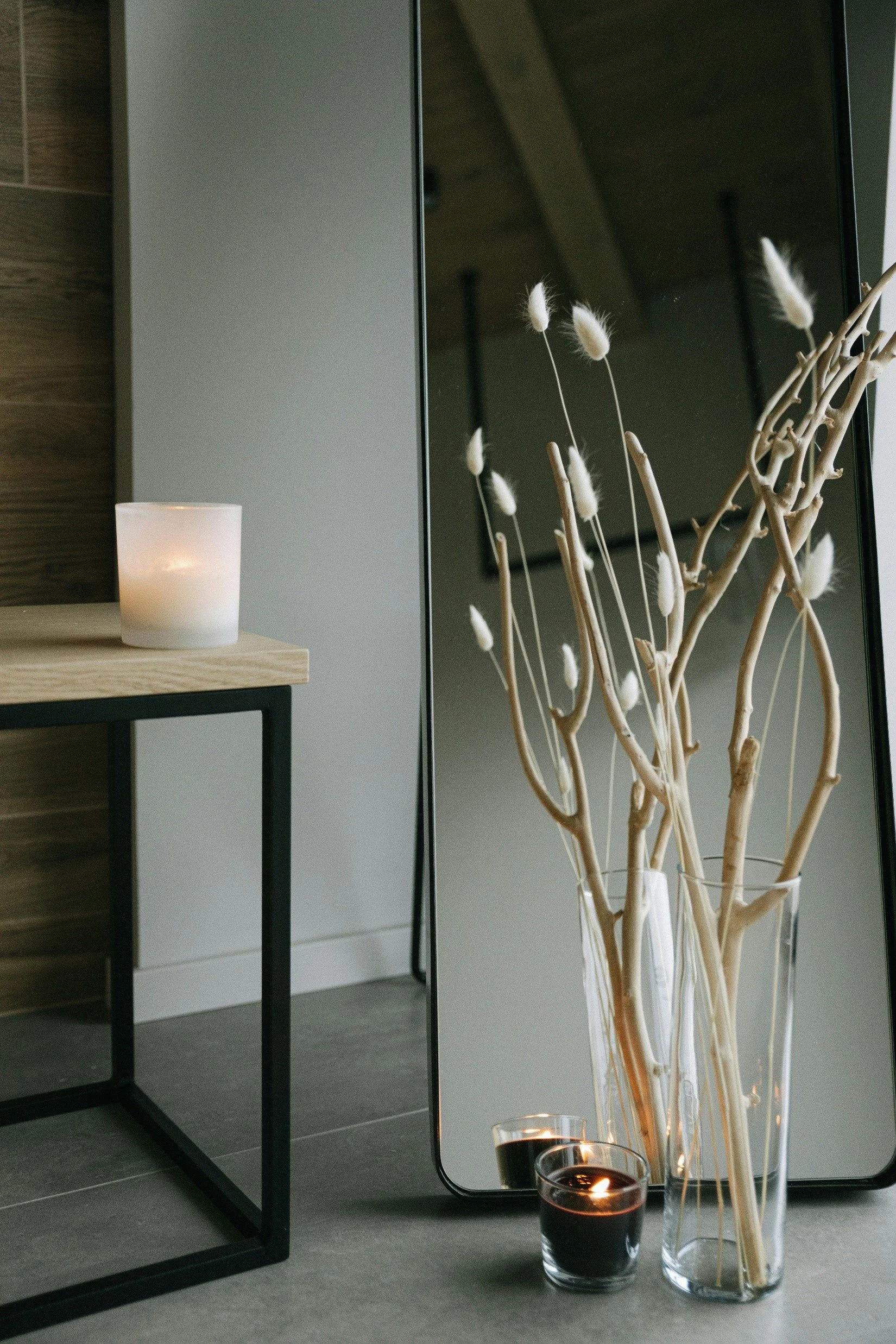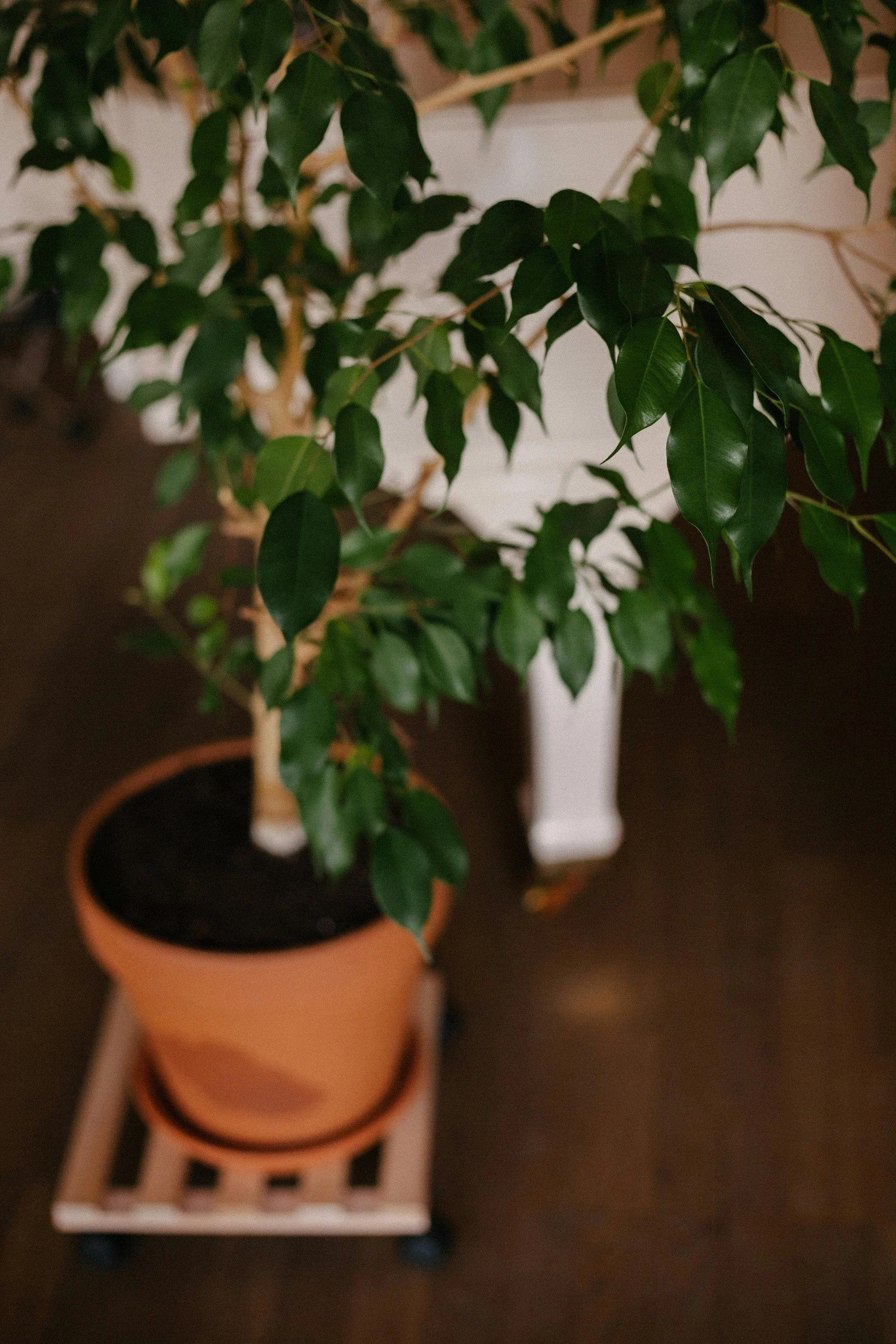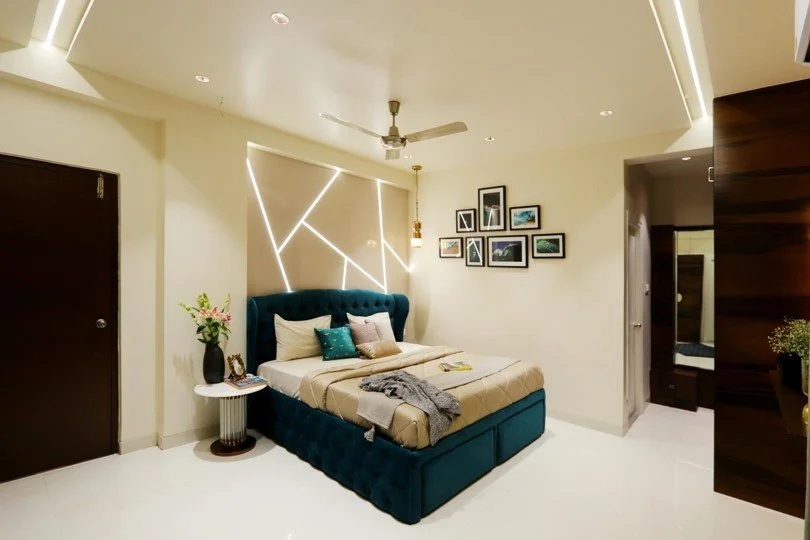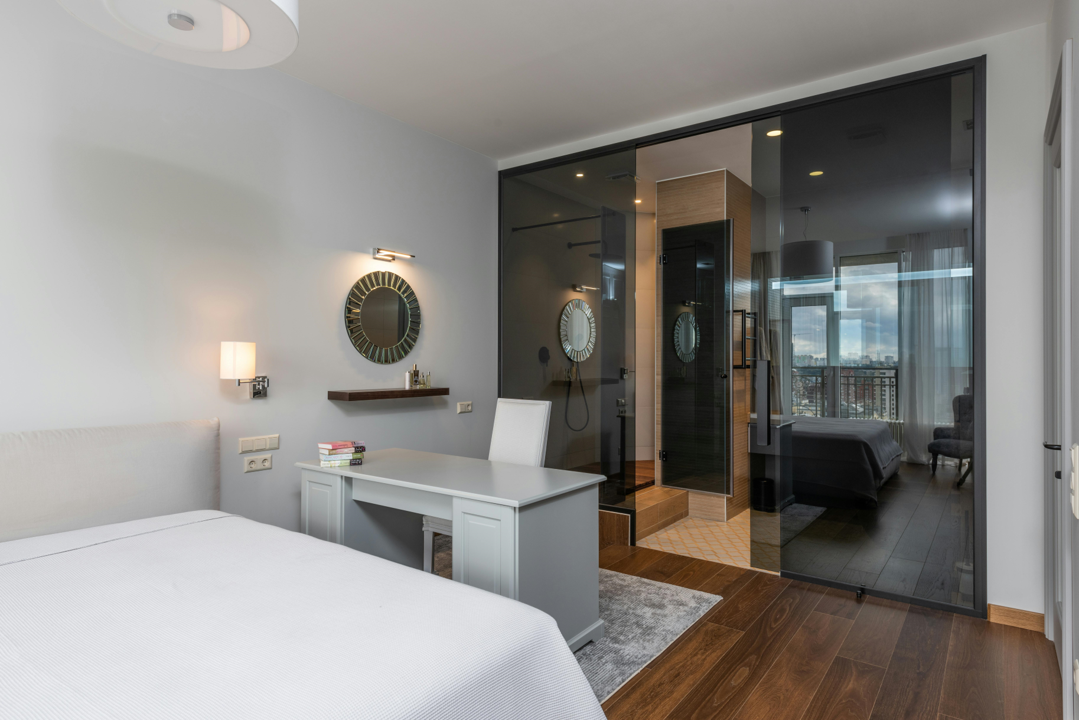Hey there, my home decor lovers! It's that time again where I go deep on what's hot in the world of home décor and aesthetics. And yes, I know I’m way late for adding my New Year predictions because we’re already a week into quarter 2. But hear me out… I needed to take some time to really see what was going on to really be able to offer my 2 cents worth. (If you recall, my 2024 paint color trend post was late too, for the same reason.) Anybody can “predict” what’s going to be hot, I like to see what’s emerging so I can scoot ahead to show you how to apply it successfully. Make sense?
Listen, I know how it goes—you scroll through endless Pinterest boards, feeling inspired and completely overwhelmed at the same time.
PNW Production
That gorgeous Japandi living room looks amazing, but where do you even start? And do you really need to redecorate your entire home just to feel current?
The answer is a big fat NO. Today, I want to walk you through the top home décor aesthetics of 2025 in a way that actually makes sense for real homes and real budgets. So, if you're looking to completely revamp your style or just want to add a few trendy touches to your existing decor, I think you’ll find something good here…
Why Finding Your Aesthetic Matters
Let's get something straight first—your home isn't just a place to store your stuff and sleep. It's your sanctuary, your personal recharge station, and honestly, a total reflection of who you are.
cottonbro studio
I've found that when my space feels right, I feel right. That’s exactly why the colors, textures, and objects around us affect our mood way more than we realize.
But here's the cool thing about modern decorating: there are no “rules” anymore. You don’t have to match everything perfectly or follow some strict design principle. Today, it’s all about decorating your space in a way that feels good to YOU. That said, having a general aesthetic direction can help your space feel intentional rather than chaotic.
It’s a lot like following a simple recipe. Add in the prescribed ingredients but also add a pinch of this and a dash of that to make it your own. You know?
How to Use This Guide
On that note, before we get to the nitty gritty, a quick note: please don't feel like you need to commit to just one aesthetic! Some of my favorite spaces blend stuff from different styles. I'm all about cherry-picking what you love from each trend and creating something that fits you personally. That’s how to add real soul to your home.
As we go through these aesthetics, I'll highlight both the full-commitment approaches and the easy add-ins.
Ivan Samkov
Because let's be honest—most of us can't afford (or don't want) to gut-renovate every time trends shift, right? And with sustainability being top of everyone’s minds, I'd much rather focus on advice that won't have you tossing your perfectly good furniture and décor to the curb.
So, grab your coffee (or wine, no judgment here), and let's explore the aesthetics defining 2025!
The Top Aesthetics of 2025
1. Neo-Naturalism
What it is: Think of Neo-Naturalism as biophilic design's cool older sibling who went to tech school. It's all about bringing nature indoors but with a modern, technological twist. This isn't just about having a few plants scattered around, it's about creating an immersive natural experience within your four walls.
Some Key elements:
Living walls that double as air purifiers
Smart plant systems that self-water and monitor plant health
Raw, organic materials paired with sleek tech
Curved, organic shapes that mimic natural formations
A palette inspired by earth, stone, and forest
Quark Studio
Easy additions: Not ready to install a full living wall? Start with a statement natural piece like a dramatic monstera or a Ficus in a textured ceramic pot.
aliona zueva
These plants have height, and depth that will add a fantastic organic shape in a corner, or low traffic spot.
Not enough space for a “big” plant moment? How about a small DIY terrarium?
cottonbro studio
They're super easy and make and are a perfect coffee table centerpiece, or shelf decor.
Techy tip: Smart plant sensors are becoming more affordable and can help even the black-thumbed among us keep greenery alive.
Is this you? This might be your aesthetic if you find yourself constantly drawn to houseplants, if you feel most at peace in natural settings, or if you're interested in the wellness benefits of bringing nature indoors.
2. Digital Maximalism
What it is: Digital Maximalism is what happens when tech meets art - meets your wildest color fantasies. It's bold, it's unapologetic, and it's perfect for those who find minimalism boring.
Inspired by digital art, gaming aesthetics, and virtual reality, this style embraces technology as a form of self-expression.
Jonathan Borba
The key elements:
LED installations that can change the mood with the tap of an app: like adding different colors or brightnesses to accent lighting.
Interactive surfaces that respond to touch or movement
Bold color contrasts and digital-inspired patterns
Furniture with integrated tech functions: like built-in phone or device chargers for wireless charging.
Spaces that transform based on activity or time of day
Easy additions: Start with programmable smart lighting—even just a few bulbs can dramatically change your space's feel.
Jakub Zerdzicki
Digital art displays like neon signs (or even repurposed tablets) can showcase rotating collections of digital artwork.
Even something as simple as bold, geometric patterned focal wall and some high contrast color choices are a nod to this aesthetic.
Sharath G
Is this you? This might be your aesthetic if you're always the first to adopt new tech, if your idea of a great night includes gaming or VR experiences, or if you're drawn to spaces that feel dynamic rather than static.
3. Nostalgic Futurism
What it is: Remember how people in the 1960s imagined we'd all be living in pod houses by 2000? Nostalgic Futurism takes those retro visions of the future and reimagines them through a contemporary lens. It's space-age meets modern function with a heavy dose of nostalgia. Like George Jetson, but how things actually are now. (Yes, I’m old!)
Key elements:
Curved, pod-like furniture reminiscent of space-age design
Vintage tech reimagined for modern use
Optimistic color palettes with pops of neon or metallic
Statement lighting that could double as sculpture
Materials that play with transparency and reflection
Pixabay
Easy additions: Look for curved statement pieces like arc lamps or rounded accent chairs.
Max Vakhtbovycn
Metallic accents in copper or chrome add that retro-futuristic touches without overwhelming your space. Even framing vintage sci-fi posters or decorating with refurbished retro tech can suggest this aesthetic without being cheesy.
Marina M
Is this you? This might be your aesthetic if you get excited about vintage space-age design, if you find yourself drawn to the optimism of past visions of the future, or if you want your space to feel playful and unique.
4. Scandinavian Evolution
What it is: We've all been loving Scandinavian design for years now, but 2025's version is taking a moodier, more textured turn. Scandinavian Evolution keeps the clean lines and functionality but infuses it with deeper colors, varied textures, and touches of luxury that feel especially relevant in our current climate.
It’s a tad bit more “maximal” but not cluttered- rather than paired back. Where Scandi- of recent years has been more about minimal, clean, and functional, the evolution almost mixes Scandi with Dark Academia to create this updated look. Yes, Scandi can handle color now!
Bilal Mansuri
Key elements:
The classic clean lines and functional approach of Scandi design
A shift from all-white to warmer, moodier neutrals
Natural luxury through varied textures—bouclé, linen, raw wood
Thoughtful, curated collections rather than stark minimalism
Ambient lighting designed for ultimate hygge
Easy additions: Swap out bright white textiles for oatmeal, taupe, or even charcoal. Add texture through chunky knit throws, bouclé pillows, or raw wood accents. Consider a moody accent wall in a deep blue or forest green.
dada _design
Is this you? This might be your aesthetic if you've always appreciated minimalism but crave more warmth, if you value function but don't want to sacrifice comfort, or if you're drawn to natural materials but still want your space to feel contemporary.
5. Adaptive Spaces
What it is: If there's one thing the past few years taught us, it's that our homes need to do more than ever before. Small spaces, especially, need to be able to handle multiple purposes.
So, adaptive Spaces embrace multi-functionality as its core principle. This isn't just practical design—it's about creating spaces that transform based on your needs throughout the day.
Key elements:
Modular furniture that can be reconfigured based on activity
Clever hidden storage that maintains clean lines when closed
Convertible areas that can switch from work to play to rest
Technology that supports multiple functions in one space
Clear visual cues for transitioning between activities
Easy additions: Room dividers (especially the pretty kind) are having a major moment.
Max Vakhtbovycn
Consider a fold-down desk that disappears when work is done, or ottomans with hidden storage that can serve as extra seating, footrests, or tables.
Even something as simple as lighting zones can help define different areas in a multi-purpose room.
Is this you? This might be your aesthetic if your space needs to serve multiple functions, if you value flexibility over fixed layouts, or if you find satisfaction in clever storage solutions and transforming furniture.
Max Vakhtbovycn
How to Mix Aesthetics Without Creating Chaos
Okay, so maybe you're loving elements from several of these aesthetics (I certainly am). Well, that’s good because you absolutely can mix them—but there are some tricks for keeping your space looking cohesive:
First, look for common elements between the styles you love.
For example, Neo-Naturalism and Scandinavian Evolution both embrace natural materials, just in different ways.
Digital Maximalism and Nostalgic Futurism both play with the relationship between tech and design.
Second, get familiar with basic color theory. A cohesive color palette can unite seemingly disparate elements. I like to stick to 3-5 core colors throughout a space, with one or two accent colors for interest.
Finally, remember the rule of three: when mixing distinct styles, try to include at least three elements from each. This creates intentional repetition that reads as purposeful instead of random.
Sustainable Approaches to Each Aesthetic
I'm not about to suggest you toss everything you own to achieve these looks. Instead, here's how to approach each aesthetic sustainably:
For Neo-Naturalism, start propagating plants from cuttings (so much cheaper!) Ask a friend for a clipping or ask your local garden center if they have clippings.
Huy Phan
(Um, best to do this when you’re already buying plants, soil, etc. from your garden store.)
Look for second-hand planters you can upcycle: Natural materials like stone and wood are all over thrift stores.
With Digital Maximalism, focus on lighting first—it's amazing how different LED strips or smart bulbs can make your existing furniture look.
Pramod Tiwari
For statement pieces, check marketplace sites for people selling or giving away barely used tech.
Nostalgic Futurism is thrift store gold! Vintage futuristic pieces from the 60s-80s are abundant and often affordable.
Tima Miroshnichenko
Clean them up, reupholster if needed, and mix with modern elements, and you are well on your way to creating this look!
For Scandinavian Evolution, focus on textiles first—they're pretty affordable to swap out. IKEA hacks can transform basic pieces into custom-looking furniture with just a bit of diy-ing.
ATBO
With Adaptive Spaces, invest in quality multi-functional pieces over time. In the meantime, rearrange what you have to experiment with different layouts and functions before slapping down too much money.
Max Vakhtbovycn
The Anti-Trend Approach
Here's my little secret: the most stylish homes I've ever seen aren't the ones that follow every trend, they're the ones that incorporate trends thoughtfully into a timeless look.
For each aesthetic I covered, there are elements that will stand the test of time:
From Neo-Naturalism, the focus on genuine materials and plant life won't go out of style—just skip the ultra-trendy plants (remember fiddle leaf fig mania? I still love them, but they’re a trick and a half to keep alive and healthy.) Instead, go for the classics, like a Spath – known also as a peace lily, or a sansevieria, “mothers-in-law’s tongue” or “snake-plant.” They’re much easier to care for.
Rov Camato
With Digital Maximalism, buy good quality lighting rather than very specific techie gimmicks. Good lighting is forever; that cat-shaped LED projector probably isn't.
Mwabonje Ringa
From Nostalgic Futurism, classic space-age shapes like am MCM style tulip table have already proven their staying power—focus on these foundational pieces rather than kitschier stuff.
In Scandinavian Evolution, the principles of functionality and natural materials are timeless—it's the specific expressions that change. Invest in quality wooden pieces that can evolve with different textiles.
Pixabay
And the principles of Adaptive Spaces are perhaps the most timeless of all—furniture that serves multiple purposes and adapts to changing needs will never go out of style.
Remember: trends should be like accessories to an outfit, not the entire wardrobe. Build a foundation of quality, timeless pieces, then layer in trendy things that can be swapped out as your tastes change.
At the end of the day, your home should make YOU happy when you walk through the door. These 2025 aesthetics offer plenty of inspiration, but don't feel pressured to recreate them exactly. Take what resonates, leave what doesn't to create a space that feels authentic to you.
I've found that the best approach is to experiment gradually. Start with small changes—a new textile here, a statement plant there—and see how they make you feel. Your style will evolve naturally over time, and there's beauty in that journey.
What aesthetic elements are you most drawn to for 2025? Are you already into any of these trends? Drop me a comment below—I love to hear how you all interpret these ideas in your own unique ways!
Until next time, happy decorating!
Read Next:
Effortless Midcentury Modern Decor for a Timeless Look
Do you love midcentury modern design, but aren’t sure how it could work in your home? Here’s how you can take the timeless aesthetics of MCM and effortlessly bring those clean lines, natural materials, and iconic furniture into your space. From open layouts to bold accents, learn how to create a look that’s both classic and contemporary.
Michael is Principal designer and blogger at Michael Helwig Interiors in beautiful Buffalo, New York. Since 2011, he’s a space planning expert, offering online interior e-design services for folks living in small homes, or for those with awkward and tricky layouts. He’s a frequent expert contributor to many National media publications and news outlets on topics related to decorating, interior design, diy projects, and more. Michael happily shares his experience to help folks avoid expensive mistakes and decorating disappointments. You can follow him on Pinterest, Instagram and Facebook @interiorsmh.












































